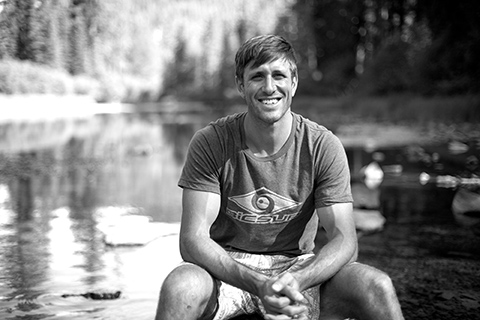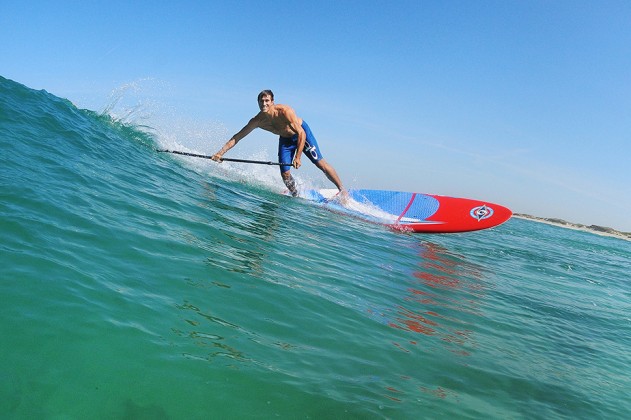CHASE KOSTERLITZ KNOWLEDGE – PROGRESSION – #1 SURF BASICS
I am honoured and excited to contribute to SUP International in this recurring segment called Progression. It’s my objective to give paddlers of all abilities the tools and knowledge to paddle more efficiently, prevent injury, win races and catch more waves. My professional background is in SUP racing and coaching but this section will be dedicated to all types of stand up paddling. Whether you SUP surf, race or simply go on sunset paddles, I believe the information in these segments will be valuable to you.
With – Chase Kosterlitz

Let’s start by setting some ground rules. There is no right or wrong way to train or paddle. However, there are certainly best practices and things that should be avoided to prevent injury and overtraining. Each paddler comes from a different background with unique genetics, lifestyles and goals that will affect their approach to paddling. Keep these things in mind when applying the information in these articles. If something is not working for you, it may need to be adapted or modified. Additionally, every paddler’s definition of success is different. Your goal may be to make it onto the podium at every race this season or to simply finish your first 5K event. Regardless of your specific definition of success, these articles will guide you through the process and help you every step of the way.
Before we get into the details of paddling, I want to bring up one last point to think about when reading these articles. Pay attention to the details. An athlete paddling at a modest 40 strokes per minute will complete 2,400 strokes during the course of a hour long race. Each stroke by itself may seem lonely, isolated and unimportant. However, combine 2,400 strokes made with bad form and they will add up to a significant loss in speed and performance, not to mention the potential for injury. This thought can be applied whether you are planning to race, surf or simply go for an evening cruise. Improvement is a process and significant gains will not come easy. Try to enjoy the journey and use these articles to help you along the way.
Paddle technique in the surf
SUP surfing is just about the most fun you can have with a board and paddle. Before we jump into technique, I want to ensure you understand a basic rule of SUP surfing. Unless you have more than two years of SUP surfing experience, never SUP surf in a crowded line-up of prone surfers. It’s dangerous for everyone in the water and is an easy way to have a bad surfing experience. Find a break that is uncrowded so you can practice safely. If surfing with others in the water, remember, just because you can catch every wave doesn’t mean that you should! Now that you know a couple golden rules of SUP surfing etiquette, we can get into SUP surfing paddle technique. SUP surfing has many dimensions and can get quite technical. For the sake of this resource, I will be focusing on your paddle stroke technique while paddle surfing. The first thing to consider is paddle choice. You will be amazed to find how much the length and blade size affects your surfing and stroke technique. We cannot begin to consider technique if you are using the wrong equipment.
Surf paddle length
I generally recommend using a surf paddle length that is anywhere between five and eight inches shorter than your regular cruising or racing paddle. There is no right or wrong length but there are certainly sweet spots for each individual. Going shorter with your surf paddle will allow you to get better leverage in your stroke for the fast acceleration needed to catch a wave or to paddle out through the whitewash. Cut your paddle to a length that is between two and five inches above your head. More experienced paddlers should go closer to the top of their head and less experienced higher. Don’t cut too much off as it is much harder to add length than to take off another inch after the initial cut. Once you have an optimal paddle length make sure you are using a blade that is not too large. This will help with fast bursts of speed in and out of the surf. Here are the specs of my equipment to help give you an idea for the range you might want to be in. Remember that there is not a ‘right’ or ‘wrong’ length or blade size. Keep in mind that I am an experienced SUP surfer. I am 190.6 cm (6’2.5) tall and weigh 90 kilos. My paddle specs for surfing are an 86 sq inch blade with a 190.6 cm length.
Rapid acceleration
Now that we have the equipment squared away let’s talk about paddling to catch a wave. When paddling for a wave, we still want to use proper form with a solid catch, power coming from the legs, hips and core and a clean release. The stroke used to accelerate onto the wave is one that is short and fast, much like a sprint stroke in racing. As we wait in the line up for a wave we are in a static position. Once we see a wave coming we must accelerate the board to a speed that is fast enough to catch the wave. A short and fast stroke is the best method to use to help get your board up to the speed needed to catch the wave. The biggest mistake I see is SUP surfers who do not set their blade on the catch before pulling. You may have seen these kinds of paddlers, or be one yourself, as they splash everywhere while violently try to catch the wave. Instead, they should slow down and concentrate on a solid catch with much shorter and faster strokes to help accelerate the board onto the wave.
Another mistake made by SUP surfers is that they don’t paddle hard enough for the wave. You should be performing a short sprint with solid effort to catch the wave. Increase your cadence to maximum repetitions while still maintaining a good catch and solid form. Once you feel the added acceleration of the wave pushing you along you may stop paddling and begin to surf. When paddling back out through the surf, use short and fast strokes to keep the board accelerating through the current and whitewash. While waiting for your next wave, always keep the paddle in the water to use as a brace. Standing still while you wait can be challenging with the rolling ocean beneath you. Keeping your paddle in the water will allow you to stabilize against the paddle. Once you see your next wave you can then accelerate using short and fast strokes. Paddling in the surf can be fun and challenging. Use these tips to help catch more waves and perform better in the surf. Happy paddling! SUP

